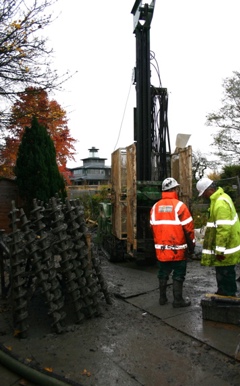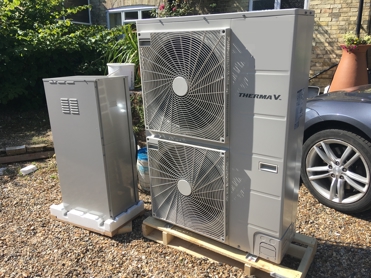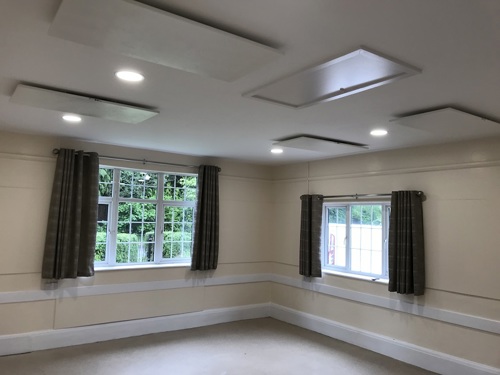Climate emergency information for communities
We’ve come up with different ways for you and your community to respond to the climate emergency, and reduce our carbon footprint.
If you would like to sign up to receive our quarterly newsletter and invites to our climate events, email zcc@scambs.gov.uk
Engaging with your community
You can engage your local community in many ways, such as holding a public meeting, carrying out a survey or petition, or having conversations about action plans at parish council meetings. The following links offer useful information and advice:
- Net Zero Now supports community climate leaders
- Peterborough Environment City Trust protects and enhances the environment. It supports people's involvement in their neighbourhoods
- Do-It Website advertises volunteer opportunities within your organisation. You can sign up your organisation and upload your opportunities available
- Reach connects charities and non-profit organisations with volunteers that have specific skills to offer
- Trustee Bank allows members to advertise trustee roles for free
- Cambridge Council for Voluntary Service (CCVS) promote local volunteering, give out grants and advice on funding, support for community groups such as GDPR advice, safeguarding, and publicity. If you want to set up a green group, contact them on 01223 464 696 or by email.
Tree Planting
Tree planting offsets carbon dioxide, reduces the impact of climate change, and improves air quality. The following links give more guidance on tree planning:
- The Tree Warden Scheme helps to conserve and enhance nature in communities
- The National Association of Local Councils offers guidance to parish and town councils. Their Tree Charter document offers information on neighbourhood tree planning
- Six Free Trees Scheme – we offer 6 free trees to parish councils in South Cambridgeshire.
Energy saving in community buildings
It is good practice to follow the ‘energy hierarchy’. This means looking at ways to save energy before investing in renewable energy sources. An example of the different stages is below:
Stage 1, energy conservation: adding better insulation would save energy.
Stage 2, energy efficiency: upgrading to LED lights uses energy more efficiently.
Stage 3, renewable energy: using solar panels or replacing oil or gas heating with air or ground source heat pumps.
The following links give more advice and guidance:
- Open Eco-Homes
- Action with Communities in Rural England their video ‘A Zero Carbon Future for Village Halls’
- Net Zero Design Guide for community buildings and village halls.
- The Centre For Alternative Technology offers free, independent advice on renewable energy and green buildings.
- switch to a green tariff. This sends a message to your supplier that you want to avoid electricity made using fossil fuels.
Community energy schemes
Support a plan to make renewable energy for local use. Local groups, like the Reach Community Solar Farm and the Swaffham Prior Heating Project, bring renewable energy to village homes.
If you’re looking to start your own community energy scheme, the following links offer advice and guidance:
- The Community Energy Guide helps you to set up a community energy group
- Community Energy England supports improvements to the energy sector
- The Centre for Sustainable Energy is a charity working on climate change. They offer support, advice, and facts on community energy.
- Rural Community Energy Fund offers funding and support to scope potential projects.
- Cambridgeshire County Council's Guide offers advice on community heating.
Case Studies
Ground Source Heat Pumps
A ground source heat pump transfers heat from the ground into buildings. An example of this in action is the Gamlingay Eco Hub case study.

Air Source Heat Pumps
Air source heat pumps (ASHPs) absorb heat from outside to warm your home and heat water. An example of this in action is the Coton Village Hall case study.

Solar Thermal Heating
A solar thermal system uses the sun’s energy and converts it into heat. The heat is then transferred into the heating system as hot water or general heating for the spaces in your building.
An example of this in action is the Gamlingay Eco Hub case study.
Infrared heating
Infrared heating heats the thermal mass (for example, stone, concrete, bricks) of the building, rather than the air. This form of heating is useful for community buildings that have varied heating needs. An example of this in action is the Elsea Park Community Centre case study.

Solar photo voltaic (PV)
Solar panels are made from photovoltaic cells that catch the sun's energy and turn it into power. An example of this in action is the Coton residents who set up a bulk buying plan to help people to buy solar PV panels.
You can learn the financial benefits of installing a solar PV system by using a solar energy calculator.
Solar Together Cambridgeshire provides a group-buying scheme to help buy solar panels and battery storage systems for a lower price.
Battery storage for solar PV
Battery storage is often used alongside solar PV. It stores extra electricity for later use.
Reach Community Solar Farm
The solar farm is owned and run by a co-operative of local people, and generates enough clean, green electricity to power 50 houses - about half the village. A community solar farm which installed 1000 solar panels on approximately 5 acres of farmland. Read more about the Reach Community Solar Farm journey.
Hydroelectric schemes
Hydroelectric power (also called hydropower or hydro systems) uses moving water to generate electricity.
An example of this in action is the Congleton Hydro case study. Or the Osney Lock Hyrdo case study which was the first community-owned hydro scheme built on the Thames.

